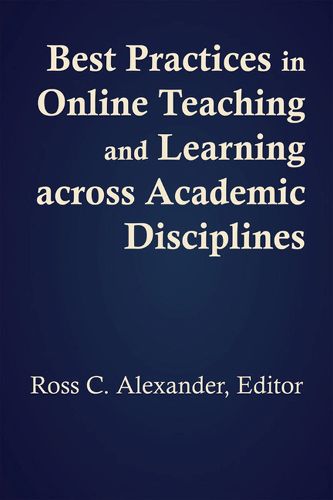Readings Newsletter
Become a Readings Member to make your shopping experience even easier.
Sign in or sign up for free!
You’re not far away from qualifying for FREE standard shipping within Australia
You’ve qualified for FREE standard shipping within Australia
The cart is loading…






This title is printed to order. This book may have been self-published. If so, we cannot guarantee the quality of the content. In the main most books will have gone through the editing process however some may not. We therefore suggest that you be aware of this before ordering this book. If in doubt check either the author or publisher’s details as we are unable to accept any returns unless they are faulty. Please contact us if you have any questions.
Online teaching and learning has surged in recent years, and faculty who normally teach in face-to-face settings are increasingly called upon to teach blended, hybrid, and fully online courses. This book provides insights from experienced university teachers and scholars across multiple disciplines-including social sciences, humanities, natural sciences, mathematics, and professional programs such as nursing, education, and business administration-who share their innovative practices, pedagogies, and instructional design techniques.
Using a common theme and structure, this work highlights and features effective, practical, and engaging
best practices
and approaches in online teaching and instructional design that can assist university faculty members and teachers, course designers and developers, and administrators invested and involved in online education. Each chapter is coauthored by faculty members possessing a wealth of experience and credentialing in online teaching and learning as well as instructional design in the relevant discipline or subdiscipline. The contributors provide specific tools and strategies that improve student engagement and outcomes, and address many subjects not typically associated with online learning, such as mathematics, composition/writing, drawing, the
hard
sciences, and speech, among others.
The book will prove to be an invaluable guide for faculty members and administrators in higher education who are teaching or designing online courses or entire online curricula, as well as instructional design staff who are working with and training faculty.
Distributed for George Mason University Press
$9.00 standard shipping within Australia
FREE standard shipping within Australia for orders over $100.00
Express & International shipping calculated at checkout
This title is printed to order. This book may have been self-published. If so, we cannot guarantee the quality of the content. In the main most books will have gone through the editing process however some may not. We therefore suggest that you be aware of this before ordering this book. If in doubt check either the author or publisher’s details as we are unable to accept any returns unless they are faulty. Please contact us if you have any questions.
Online teaching and learning has surged in recent years, and faculty who normally teach in face-to-face settings are increasingly called upon to teach blended, hybrid, and fully online courses. This book provides insights from experienced university teachers and scholars across multiple disciplines-including social sciences, humanities, natural sciences, mathematics, and professional programs such as nursing, education, and business administration-who share their innovative practices, pedagogies, and instructional design techniques.
Using a common theme and structure, this work highlights and features effective, practical, and engaging
best practices
and approaches in online teaching and instructional design that can assist university faculty members and teachers, course designers and developers, and administrators invested and involved in online education. Each chapter is coauthored by faculty members possessing a wealth of experience and credentialing in online teaching and learning as well as instructional design in the relevant discipline or subdiscipline. The contributors provide specific tools and strategies that improve student engagement and outcomes, and address many subjects not typically associated with online learning, such as mathematics, composition/writing, drawing, the
hard
sciences, and speech, among others.
The book will prove to be an invaluable guide for faculty members and administrators in higher education who are teaching or designing online courses or entire online curricula, as well as instructional design staff who are working with and training faculty.
Distributed for George Mason University Press